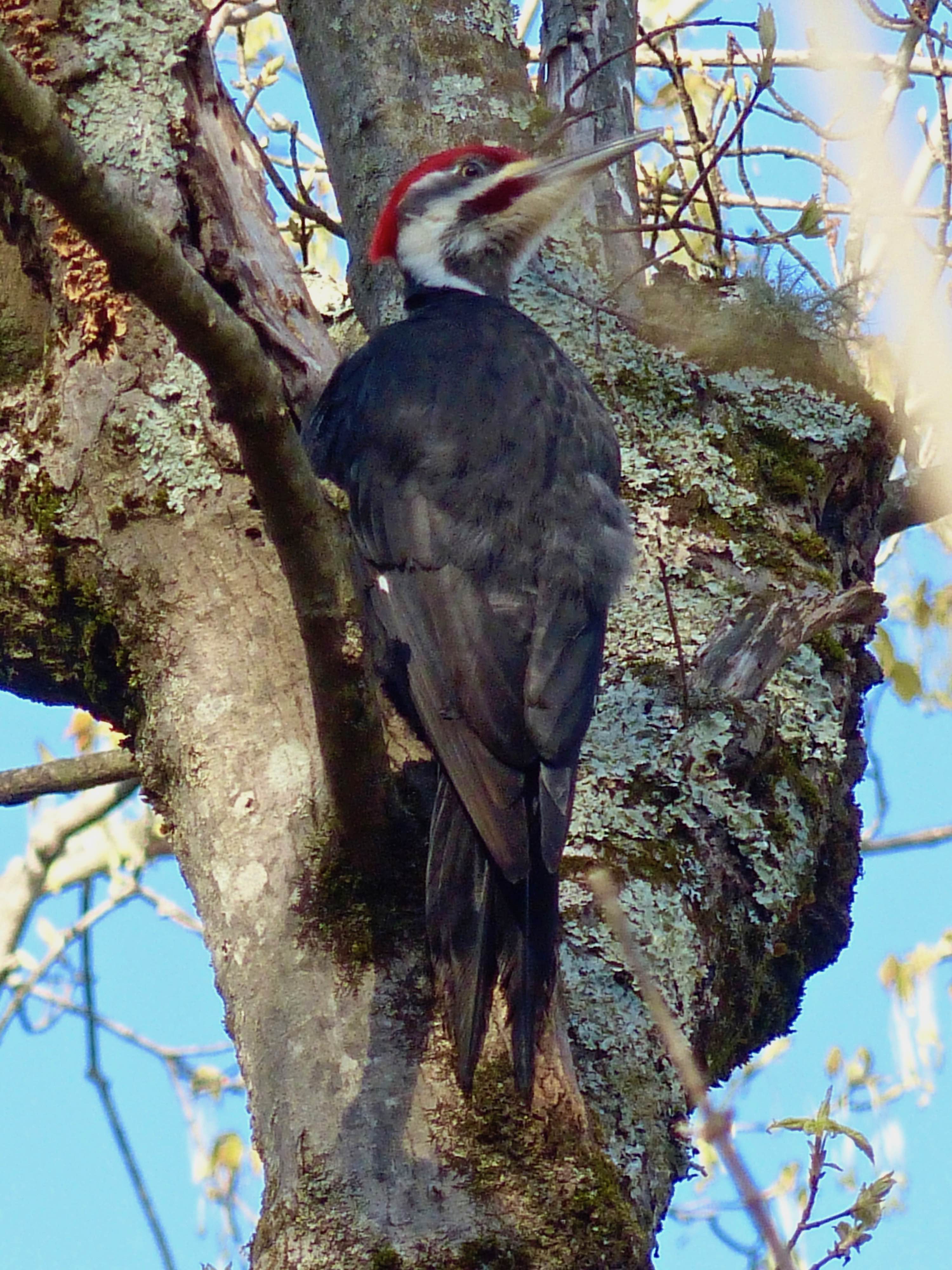

The red-headed woodpecker has huge blocks of non-patterned color on its body. Red-headed woodpeckers can only be found in Ohio at all times of the year.

They are among the birds who don’t prefer to fly in isolation rather, they prefer flying in flocks. They enjoy hanging around in fields and pastures, where there are lots o f grains and flying insects to eat because they collect from the ground on a daily basis. They also gather seeds and nuts from the grass and store them in their homes. They’ll wait for dragonflies to fly by from a nearby tree branch before swooping in for the kill. They are one of the world’s most beautiful woodpeckers. They’re among the few species of woodpecker that may be primarily found in the wilderness. In contrast to their pearl-white tummies and black undersides with white-edged wings, their whole crown from the neck up is a bright scarlet that attracts the eye. Red-headed woodpeckers are among the most visually appealing woodpeckers on the planet. While they travel regionally, Ohio is their year-round home, and they may be seen in parks, preserves, and wildlife. Red-headed Woodpecker numbers have fluctuated dramatically over time, according to scientists, and this has been linked to the supply of food supplies.Įven though birds are omnivorous, reductions in particular plant and insect species appear to harm them. They are also among the only woodpecker species that can store food, usually in the form of acorns. Its cry is a shrill, extremely loud “Churr!” and its drum is fast. They may be found in Pete’s Pond and Veterans Park, among other places.īecause the Red-headed is among the few woodpecker species that is sexually monomorphic, we can’t tell the difference between a male and a female. They’re sprinkled throughout the landscape in little groups. The heads of immature birds are darker grey, and as time passes, their plumage changes to red as they get older.

They’re the only woodpecker that’s not sexually dimorphic, meaning that males and females look alike. They favor dead trees that are close to water sources. Red-headed WoodpeckerĪ vivid redhead, a black breast with a white abdomen, and white wings distinguish the red-headed woodpecker. This species inspired the comic book character Woody Woodpecker.īelow are the characteristics of the Pileated Woodpecker, Scientific Name Dryocopus pileatus Family Name Picidae Length 16-19 inches (40-49 cm) Weight 8.8-14.1 ounces (250-400 grams) Wingspan 26-30 inches (66-76 cm) Habitat Mature forests, woodland areas, and forested suburbs Food Insects, ants, beetles, termites, fruits, nuts, and berries 2. Their dwellings are immediately visible, as a vast hole is required to host such a gigantic bird. They also consume fruits and berries, and for a bird of this size, they can balance on little vines and plants, which might surprise you to believe. They are one of the most active excavators among North American woodpeckers, digging into dead trees and searching for social insects.Īlthough they are significantly less prevalent in Ohio than in the southeast, you ought to be able to discover them as they’re so difficult to miss when they are around. These birds are found in Ohio throughout the year. The specie started to colonize abandoned farms as they reverted to woodlands.ĭespite not being as prevalent as many of the other woodpeckers you’ll see here, they may still be spotted in many protected places around Ohio. While both male and female of the species have a black stripe around the eyes and another stripe that extend down from the bill to the throat, the female’s second stripe is all black, whereas the male’s second stripe is partially red and resembles a mustache,

Its overall body is considered to be massive is massive, from its dagger-like bill to its wingspan to its bright crimson crest.Īlthough Pileated Woodpeckers are easily distinguishable, a vital field mark may be used to identify between a male and a female, and it is a frequent distinction amongst woodpecker genders. The Pileated Woodpecker is Ohio’s biggest woodpecker.


 0 kommentar(er)
0 kommentar(er)
